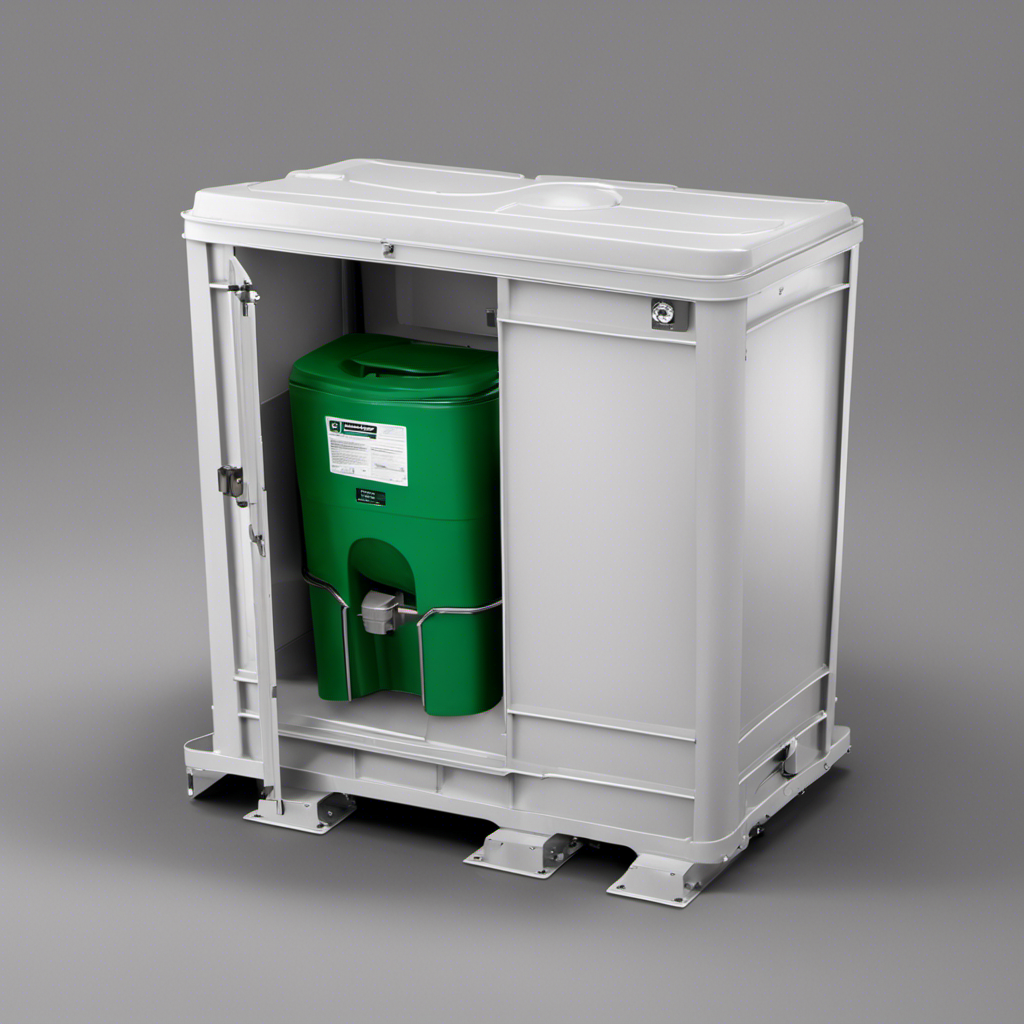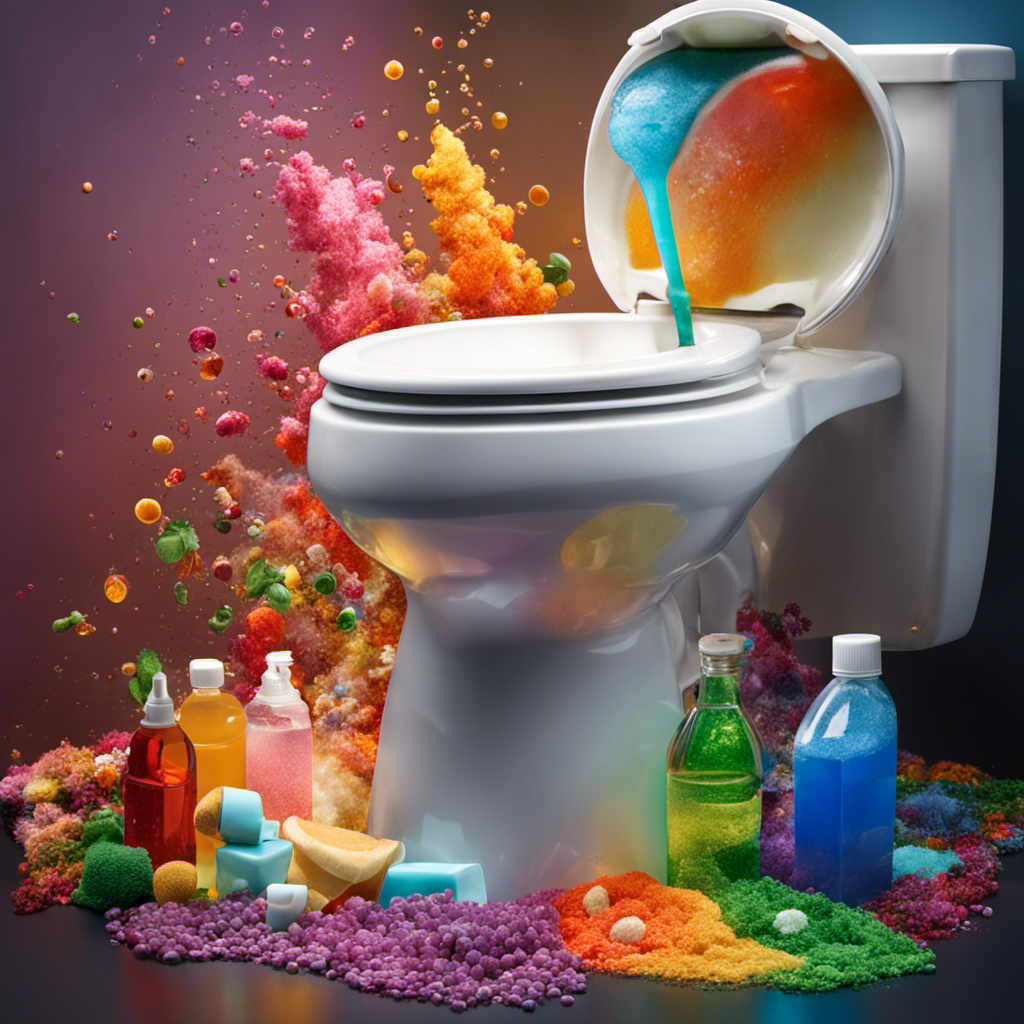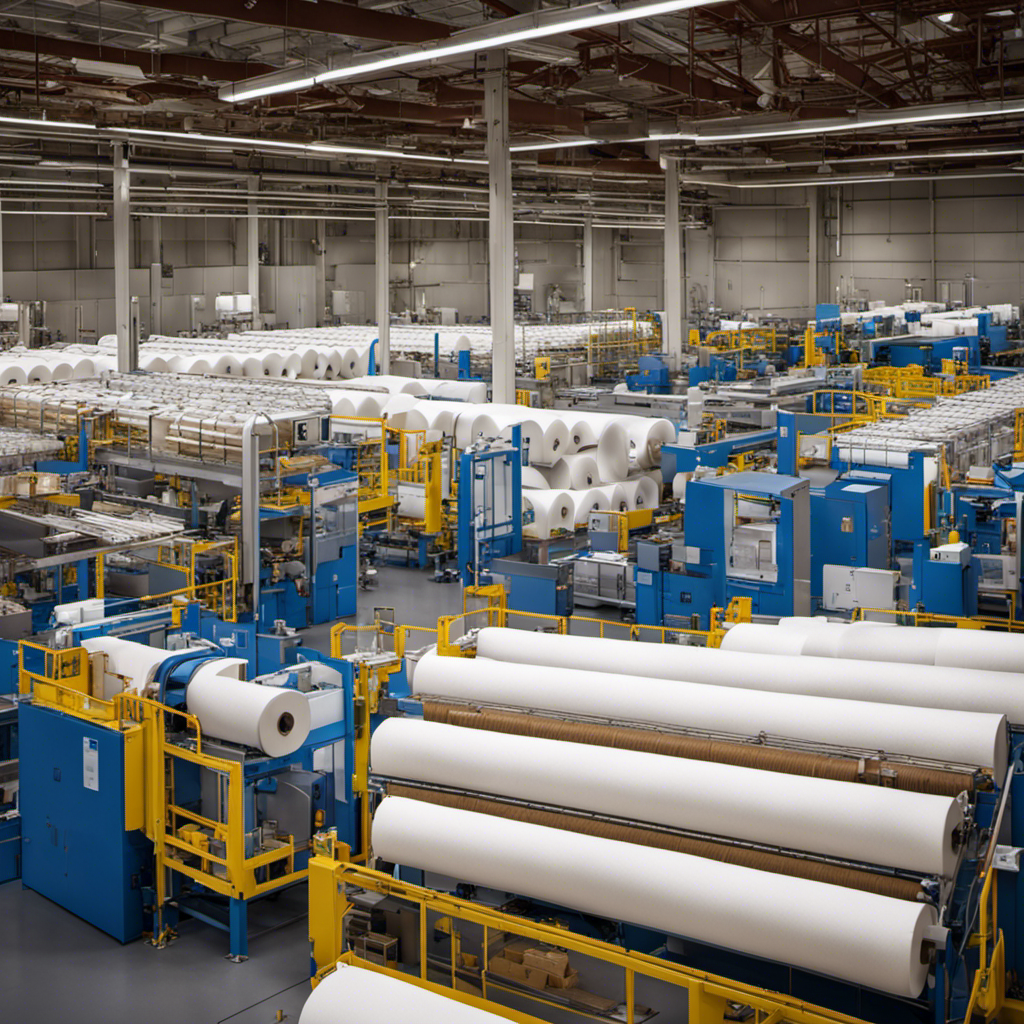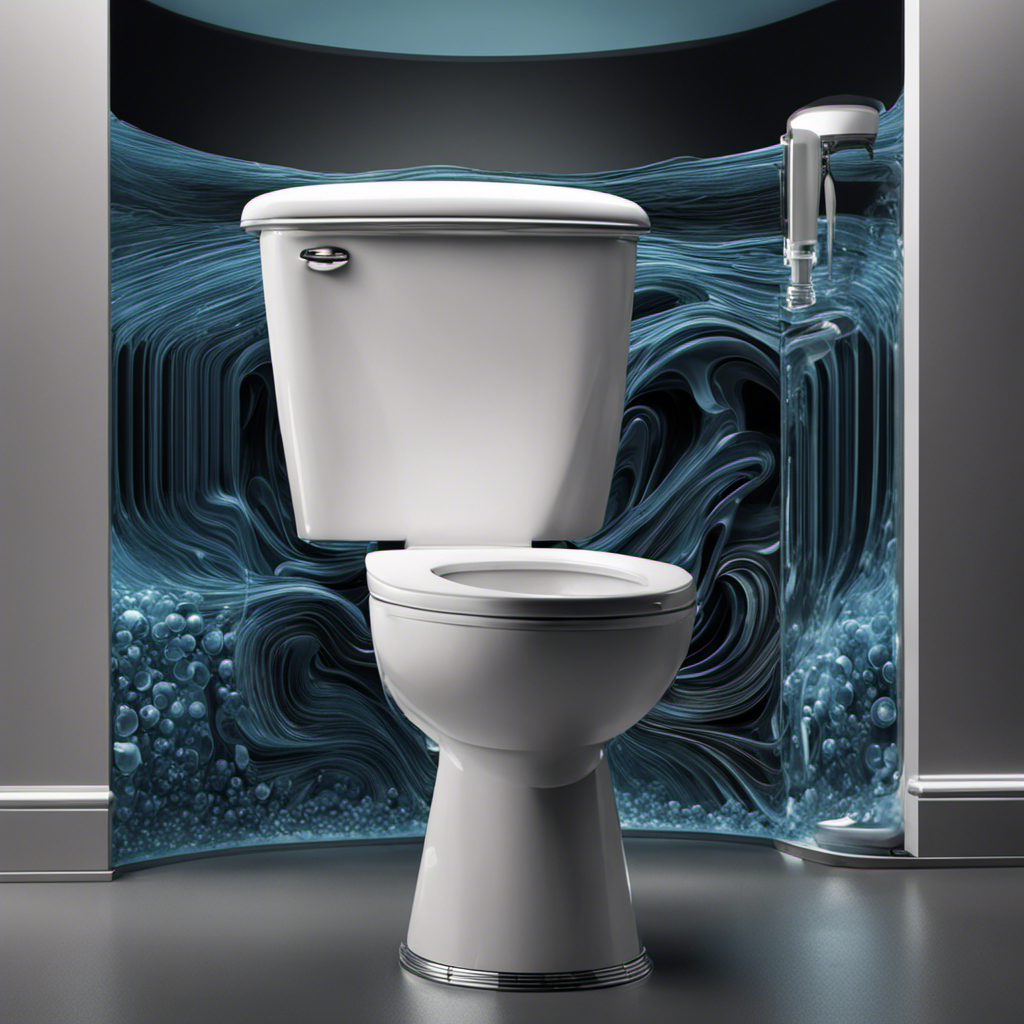As I plunge into the world of waste management, I find myself knee-deep in the fascinating realm of chemical toilets. These portable marvels have a rich history and serve as a convenient solution for all our sanitary needs on the go.
From camping trips to construction sites, they have become an integral part of our modern lives. In this article, I will delve into the inner workings of chemical toilets, exploring their components, operation, and the myriad benefits they offer.
So, let’s dive in and uncover the secrets of this essential convenience.
Key Takeaways
- Chemical toilets have a rich history dating back to the early 20th century and have evolved to incorporate advanced features.
- The main components of a chemical toilet include a holding tank, sealable lid, chemical solution, seat, flushing mechanism, and ventilation system.
- Chemical toilets use a combination of chemicals and water to break down waste, prevent odors, and facilitate easy disposal.
- The benefits of using a chemical toilet include portability, minimal environmental impact, easy maintenance, and convenient and hygienic sanitation solutions for various settings.
History of Chemical Toilets
The history of chemical toilets dates back to the early 20th century. These portable toilets have evolved over time to become an essential part of sanitation systems.
Initially, chemical toilets were simple structures with a seat and a holding tank filled with chemicals to break down waste and control odor. As time progressed, advancements in technology led to the development of more sophisticated chemical toilets. Today, modern chemical toilets incorporate features such as flushing mechanisms, efficient waste disposal systems, and improved odor control.
While chemical toilets provide a convenient and hygienic solution for temporary sanitation needs, they do have an environmental impact. The chemicals used in these toilets can contaminate water sources and harm ecosystems if not properly managed.
Transitioning into the next section, let’s explore the components that make up a chemical toilet.
Components of a Chemical Toilet
One of the main components in a chemical toilet is the holding tank. This tank is specifically designed to store and contain the waste produced in the portable toilet. It is an essential part of the system that ensures proper waste disposal.
The holding tank is made of durable and leak-proof materials to prevent any spills or leaks. It is equipped with a sealable lid to maintain hygiene and prevent odors from escaping. The tank also includes a chemical solution, usually a combination of biocides and deodorizers, that helps break down the waste and control odors.
These components work together to provide a convenient and sanitary solution for waste management in portable toilets.
Now, let’s delve into how chemical toilets work and the mechanisms behind their functionality.
How Chemical Toilets Work
To understand how chemical toilets work, it’s important to examine the mechanisms behind their functionality. Chemical toilets are designed to provide a sanitary and efficient solution for waste disposal in areas where traditional plumbing systems are not available or practical. These toilets use a combination of chemicals and water to break down and neutralize waste, preventing odors and facilitating the decomposition process.
One of the main advantages of chemical toilets is their portability. They can be easily transported and set up in remote locations, making them ideal for outdoor events, construction sites, and camping trips. Additionally, chemical toilets require minimal maintenance and can be quickly emptied and cleaned.
However, it’s important to consider the environmental impact of chemical toilets. The chemicals used in these toilets can have negative effects on ecosystems if not properly disposed of. It is crucial to follow proper guidelines for waste disposal and use environmentally friendly chemicals whenever possible to minimize their impact on the environment.
Benefits of Using a Chemical Toilet
Using a chemical toilet offers several advantages. Portability and easy maintenance are two key benefits. These advantages make chemical toilets a popular choice for outdoor events, construction sites, and recreational vehicles.
Here are some key advantages to consider:
-
Portability: Chemical toilets are designed to be lightweight and compact. This allows for easy transportation and setup in various locations. It makes them ideal for situations where traditional plumbing is not available.
-
Environmental Impact: Chemical toilets use special chemicals to break down waste and control odors. These chemicals are designed to be safe for the environment, minimizing any negative impact on the surroundings. Additionally, the waste in chemical toilets can be properly disposed of, ensuring that it doesn’t pollute the environment.
-
Easy Maintenance: Cleaning and maintaining a chemical toilet is relatively simple. The chemicals used help to break down waste and prevent odors, making it easier to keep the toilet clean and hygienic.
In the next section, we will discuss the maintenance and cleaning of chemical toilets in more detail.
Maintenance and Cleaning of Chemical Toilets
When maintaining and cleaning a chemical toilet, you’ll find it helpful to follow a regular schedule to ensure proper hygiene and functionality. Here are some maintenance tips to keep your chemical toilet in good condition.
First, always use the recommended chemicals to prevent odors and break down waste effectively.
Empty the waste tank regularly to avoid overfilling and potential leaks.
Clean the toilet bowl and seat with a mild disinfectant to maintain cleanliness and prevent the growth of bacteria.
Additionally, inspect the seals and valves regularly for any signs of wear or damage and replace them if necessary.
Common problems with chemical toilets include clogs, leaks, and unpleasant odors.
Frequently Asked Questions
Are Chemical Toilets Environmentally Friendly?
Chemical toilets are often considered environmentally friendly due to their effectiveness in controlling odors. When comparing their environmental impact to traditional flush toilets, they are generally more efficient in water usage and can be a sustainable option in certain contexts.
Can Chemical Toilets Be Used in Cold Weather?
Chemical toilet insulation is necessary in cold weather to prevent freezing. In cold climates, chemical toilets are more effective than traditional flush toilets because they don’t require water and can be easily transported.
How Often Should the Chemicals in a Chemical Toilet Be Replaced?
The chemicals in a chemical toilet should be replaced every 1-2 weeks, depending on usage. Without chemicals, the toilet will not function properly and may emit unpleasant odors. It’s important to follow the manufacturer’s instructions for optimal performance.
Are Chemical Toilets Safe for Children to Use?
Chemical toilets may pose potential health risks for children due to exposure to chemicals. Alternatives like composting toilets or portable camping toilets can be safer options for children in outdoor settings.
Can I Use a Chemical Toilet While It Is Being Cleaned or Maintained?
Yes, you can use a chemical toilet while it’s being cleaned or maintained. However, it’s important to follow safety guidelines. Using chemical toilets in public spaces has advantages, like convenience, but also disadvantages, such as the need for regular maintenance.
Conclusion
In conclusion, chemical toilets have revolutionized waste management in various settings. Their compact design and efficient functioning provide a convenient and hygienic solution for sanitation needs. Whether it’s at a construction site, a camping trip, or even during emergencies, these portable toilets ensure proper waste disposal while minimizing the risk of contamination.
Just like a silent guardian, they silently work in the background, ensuring cleanliness and comfort for all. So, next time you encounter a chemical toilet, remember its importance in maintaining a healthy and safe environment.










